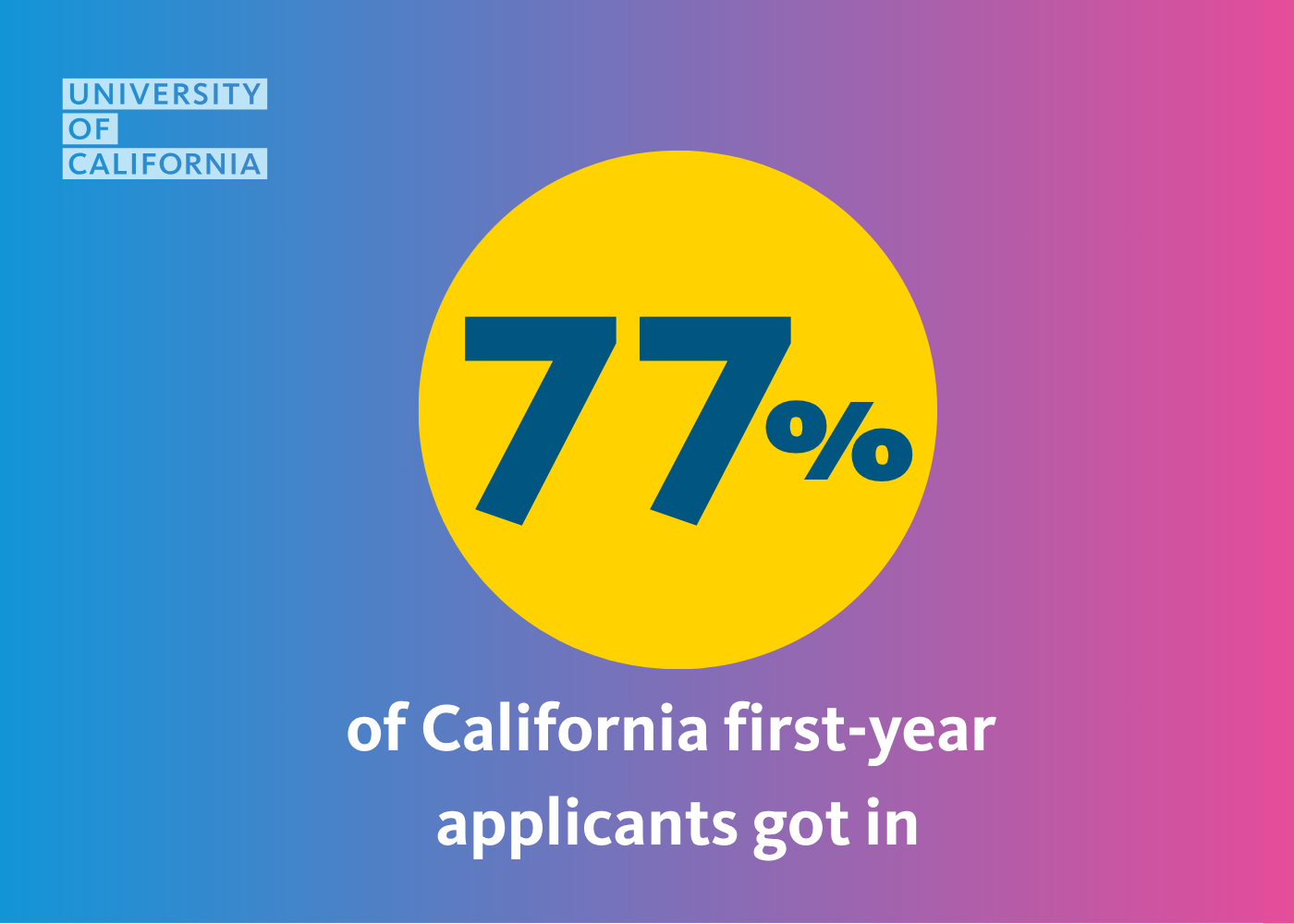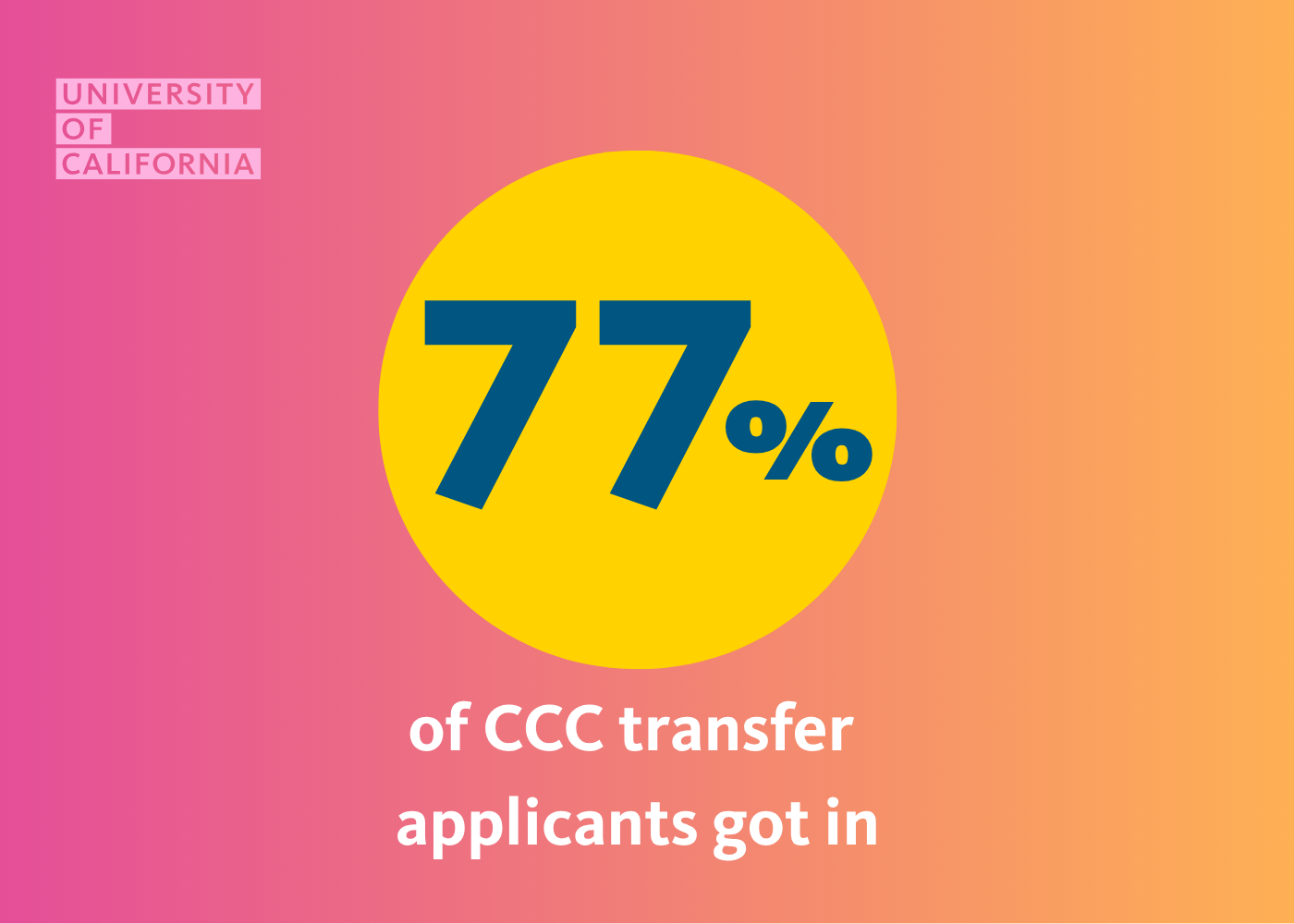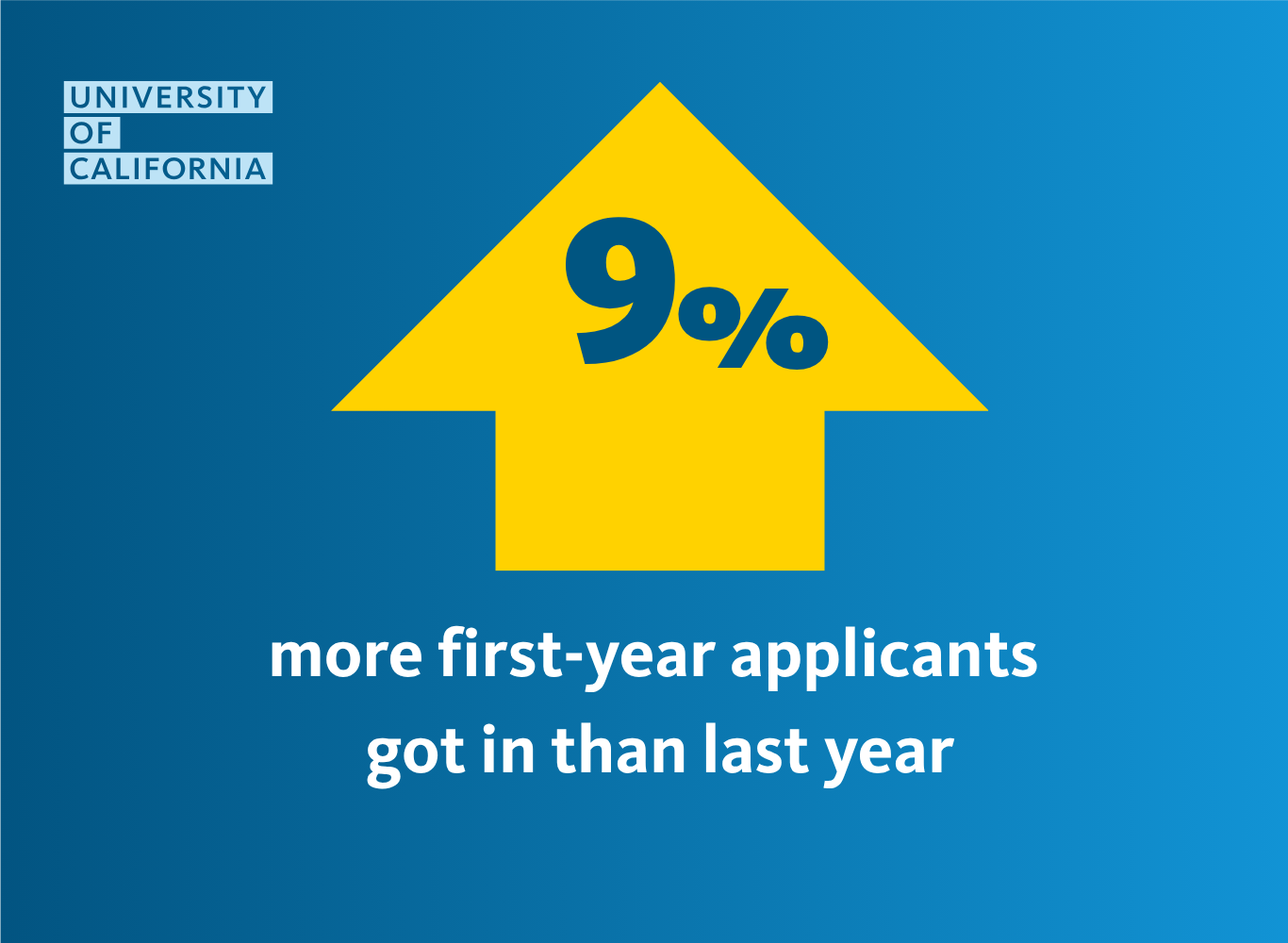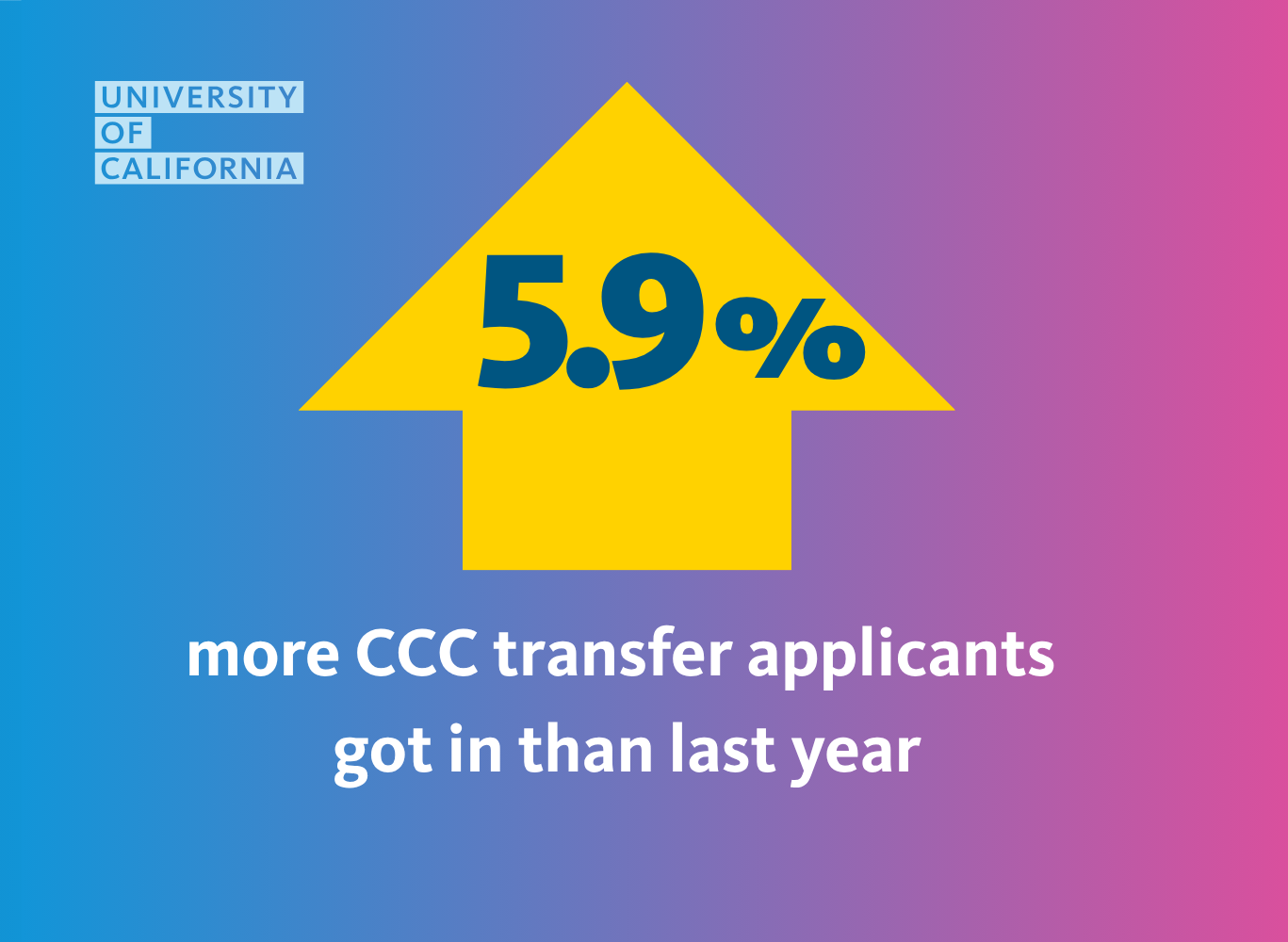Apollonia Morrill, UC Newsroom

If you’re a Californian with college on the horizon, here’s a piece of good news: The University of California accepted over 77 percent of in-state first-year undergraduate applicants for fall 2025.
That acceptance rate is a full 7 points higher than last year, meaning it’s that much more likely that a California first-year applicant will secure a spot at one or more of UC’s nine top-ranked undergraduate campuses.

The welcome news comes just days before the Aug. 1 opening of the UC application for fall 2026 and reflects the University’s yearslong commitment to expanding educational opportunity for more California students.
Across the UC system, acceptance rates for both California first-years and California community college transfer students shot up from last year. Both landed at 77.1 percent, up from 70 percent and 75.7 percent, respectively.
“We continue to experience significant growth — a clear indication that Californians recognize the value of a UC degree,” said President Michael V. Drake, M.D. “Our latest admissions numbers demonstrate that families across our state recognize that UC degrees prepare students for a lifetime of meaningful contributions in their communities and far beyond.”

In terms of headcount, roughly 101,000 first-year California students got in this year, setting a record for the biggest class of accepted in-state students in UC’s history. The number of admitted California first-years has been trending upward for years as the University has strived to meet demand and provide more opportunities for California students. Admission offers have grown by more than 39,700 since 2015. UC has also worked to boost admission for transfer students, with 27,845 transfer students from California community colleges receiving admission offers this fall. In all, 180,382 undergraduate applicants were offered a spot for fall 2025.

Why did the numbers go up?
Several factors contributed to the increase in admits for fall 2025. First, UC enrolled a particularly large class of students in fall 2021. That class graduated this spring, making more seats available for new students.
In addition, some UC campuses aimed to minimize the use of waitlists this year by increasing the number of students initially admitted, a change that benefits both the school and the student by not drawing out the admissions process deep into the summer. UC Merced and UC Riverside, campuses that are expanding their majors and programs, also increased their offers to both first-year and transfer students.

The increases are also part of a yearslong plan to expand educational opportunities for California students as part of a funding compact between the University and Gov. Gavin Newsom that aligns with UC’s 2030 goals. Working in partnership with state lawmakers, the University has mapped out an ambitious agenda to boost graduation rates, reduce the time it takes students to earn their degrees, and expand California enrollment. UC is on track to produce 1.2 million undergraduate and graduate degree holders by 2030, a 20 percent increase since 2014.
Opening the door to a lifetime of benefits
Also continuing a yearslong trend, UC admitted large numbers of low-income and first-generation college students from both the first-year and transfer applicant pools for fall 2025. Of admitted California first-years, 41.8 percent are from low-income families, while 42.4 percent would be the first in their families to earn a four-year college degree. For California community college transfer students, those numbers were 46 and 49.7 percent, respectively. The strong numbers are a sign that California students recognize that a world-class UC education is within reach, regardless of their socioeconomic status.
What do students get with their UC education? The data is clear: A degree from the University of California unlocks a lifetime of opportunities. UC graduates go on to high-growth careers, experience steady income growth over time, and are more likely to own a home or launch a business than their peers without college degrees — and that’s just for starters. It’s especially true for low-income and first-generation students, who outearn their families within just four years of graduating.
Make no mistake: the life-changing benefits of a UC degree are served up at every campus, from the most established, 157-year-old UC Berkeley, to the youngest, UC Merced, which will celebrate its 20th birthday this September. In fact, all nine campuses were listed in the top 45 public colleges in the nation in the most recent U.S. News & World Report Best Colleges rankings.
“California has no shortage of brilliant students seeking educational opportunity, and we’re thrilled to be at the top of their list. We’re trying to bring in as many qualified students as possible to access the transformative power of a UC education,” said Han Mi Yoon-Wu, UC’s associate vice provost and executive director for Undergraduate Admissions. “We are proud to offer these exceptional young people a place at the University of California.”
See the preliminary data on UC’s fall 2025 admits, along with campus-by-campus breakdowns. Final enrollment data will be available in winter 2026.

